-
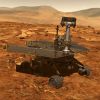 +21 +6
+21 +6Why we can't look for life in the waters of Mars
Protecting alien sites from Earth contamination.
-
 +57 +7
+57 +7Why We Should Land on Phobos Before We Land on Mars
Rather than an expensive Apollo 8-style flyby or an audacious out-the-gates landing, NASA is mulling landing on the rocky, tiny moon first.
-
 +40 +7
+40 +7How Accurate Is "The Martian"? 9 Things The Movie Got Right And Wrong
"The Martian" is hitting cinemas right about now, and already it is being heralded as one of the most scientifically accurate sci-fi films of all time. We’ve seen the movie, and we’ve got to say, it’s amazing how far we’ve come since "Armageddon" (shudder). NASA has been so impressed, they've been using the movie as a marketing campaign for their own, actual manned missions to Mars in the 2030s.
-
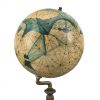 +23 +10
+23 +10Mars efter Lowell's Glober
A manuscript globe, hand painted and lettered, representing in 3-dimensional form the maps of Mars published in the American astronomer Percival Lowell's books,Mars and its Canals (1906) and Mars as the Abode of Life (1908) which developed Camille Flammarion's views. The globe is mounted on a bronze stand. Emmy Ingeborg Brun was a Danish Mars enthusiast who made a small number of globes, many for presentation to particular individuals and institutions.
-
 +28 +5
+28 +5Exclusive: NASA director Jim Green talks about The Martian and better living through radiation
NASA director of planetary sciences explains why flags don't fly on Mars.
-
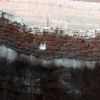 +25 +4
+25 +4Mars Orbiter Spots a Huge Avalanche of Carbon Dioxide on the Red Planet
In another reminder that the Red Planet features a complex and active surface, the HiRISE camera aboard the Mars Reconnaissance Orbiter has captured an image of a “dry ice avalanche” streaming down a cliff.
-
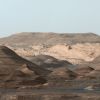 +32 +7
+32 +7Curiosity's Drill Hole and Location are Picture Perfect
NASA's Curiosity Mars rover drilled its eighth hole on Mars this week.
-
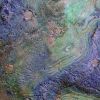 +20 +6
+20 +6Mars' Missing Atmosphere Likely Lost in Space
A Martian atmosphere thick enough to allow constantly flowing water may have been lost to space rather than trapped by surface rocks, according to a recent study.
-
 +53 +12
+53 +12NASA Releases Plan Outlining Next Steps in the Journey to Mars
A report that provides an update on NASA's strategy for human deep space exploration that will enable our journey to Mars.
-
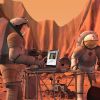 +25 +5
+25 +5Putting Astronauts on Mars: NASA Lays Out Three-Phase Plan
NASA aims to put boots on Mars in the 2030s after first gathering human-spaceflight experience and expertise in low-Earth orbit and the "proving ground" of cis-lunar space near the moon.
-
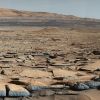 +28 +8
+28 +8NASA's Curiosity Rover Team Confirms Ancient Lakes on Mars
A new study from the team behind NASA's Mars Science Laboratory/Curiosity has confirmed that Mars was once, billions of years ago, capable of storing water in lakes over an extended period of time.
-
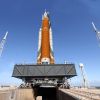 +41 +9
+41 +9NASA Completes Critical Design Review for Space Launch System
For the first time in almost 40 years, a NASA human-rated rocket has completed all steps needed to clear a critical design review (CDR). The agency’s Space Launch System (SLS) is the first vehicle designed to meet the challenges of the journey to Mars and the first exploration class rocket since the Saturn V.
-
 +31 +9
+31 +9Venus, Jupiter and Mars line up for skyline spectacle
Venus, Jupiter and Mars can be seen from the Earth's skyline this week in a rare grouping of the three planets.
-
 +25 +5
+25 +530th October 1938 - Welles scares nation
Orson Welles causes a nationwide panic with his broadcast of “War of the Worlds”—a realistic radio dramatization of a Martian invasion of Earth.
-
 +22 +5
+22 +5Ion Engine Breakthrough Could Take Us To Mars At A Fraction Of The Fuel
A group of French physicists has optimized a type of ion thruster to significantly extend its lifetime: the new development made it sturdy enough to be able withstand a long trip into deep space. Such a thruster would require 100 million times less fuel than common thrusters that use chemical reactions to propel a spacecraft forward.
-
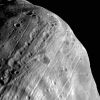 +46 +7
+46 +7Grooves on the surface Phobos hint Mars' gravity is tearing it apart
Grooves on the surface of Mars’ largest moon suggest it is being destroyed by its parent planet. While scientists have long suggested it is doomed to be destroyed, the ‘extensive system of grooves’ the first signs that the rocky satellite is gradually been torn apart. They were first spotted in the 1970s, but new analysis shows the grooves match up with regions being put under stress.
-
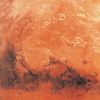 +38 +13
+38 +13China says it plans to land a rover on Mars in 2020
After exploring the moon, China now has its sights on Mars. The country plans to send a rover to the Red Planet in 2020, according to the country's state news agency Xinhua. On Tuesday, China unveiled a model of the rover in Shanghai, at the China International Industry Fair, a showcase for the country's latest technology.
-
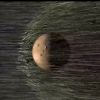 +15 +6
+15 +6It's official: NASA announces Mars' atmosphere was stripped away by solar winds
We finally have an understanding of how Mars transformed from a once habitable, Earth-like planet, into the dry world we see today. NASA researchers have just announced that Mars' once rich atmosphere was stripped away by solar winds in the early...
-
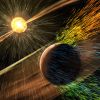 +15 +2
+15 +2Scientists discover why Mars is losing a disturbing amount of atmosphere every second
Billions of years ago, Mars looked a lot like Earth, scientists suspect. But something happened 3.7 billion years ago that severely changed the Red Planet's climate and, over time, left the surface dry, desolate, and frozen — a lifeless shell of its former self. For years, planetary scientists have wondered where all the surface water and atmospheric carbon dioxide — important for possible plant growth — went.
-
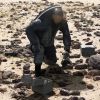 +22 +5
+22 +5A new generation of weird-looking space suits will take us to Mars
New materials and new designs could help astronauts withstand longer periods of time in space and deal with the hazards of exploring other planets. By David Andrew Green and Matteo Stoppa.
Submit a link
Start a discussion




















